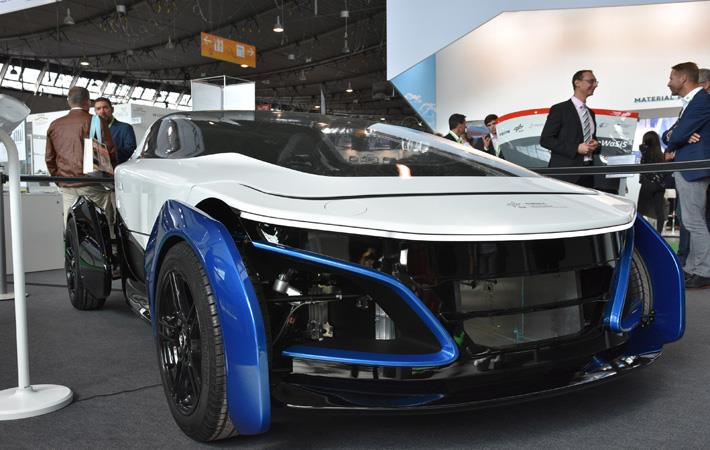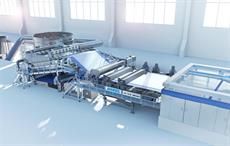BASF and its partner BNP Brinkmann are collaborating with the German Aerospace Centre on its research project “Next Generation Car (NGC)”. The two have developed a light-weight composite based on natural fibre for the project which is meant to promote the development of quiet, low-emission road vehicles with a high degree of automation and a wide range.
“By using our Acrodur binder we were able, together with our partner BNP Brinkmann, to produce a composite material from renewable resources that meets the German Aerospace Centre’s particularly high requirements for stability and weight,” explains Thorsten Habeck, head of Business Management Fibre Bonding – Europe, Middle East and Africa at BASF.BASF and its partner BNP Brinkmann are collaborating with the German Aerospace Centre on its research project "Next Generation Car (NGC)". The two have developed a light-weight composite based on natural fibre for the project which is meant to promote the development of quiet, low-emission road vehicles with a high degree of automation and a wide range.#
The goal of the German Aerospace Centre’s project “Next Generation Car (NGC)” is to promote the development of quiet, low-emission road vehicles with a high degree of automation and a wide range. It uses state-of-the-art technologies, among other things, for vehicle structure, engine and energy management. Light-weight construction is key when it comes to the development of innovative vehicle concepts. About two thirds of fuel consumption depends directly on the weight of the vehicle.
The contribution to the project made by BASF and its partner BNP Brinkmann concerned the “Safe Light Regional Vehicle” (SLRV), the smallest and lightest of the vehicle concepts developed as part of the NGC project. It combines a novel, metal sandwich type of construction with an innovative entry concept, a highly efficient hydrogen fuel cell engine and a novel car body to meet the demanding safety and weight (450 kg) requirements of the light-weight L7 vehicle category.
The interior floor of the NGC SLRV features light-weight composites made from natural fibre to protect the car body against mechanical deformation. “BASF and BNP Brinkmann were able to help us meet a difficult requirement and supplied us with tailormade moulded parts that combine extremely low weight with high stability. This was essential for our NGC SLRV because, as the hood opens upward, people get into the car in an upright position, which leads to a particularly high point load on the car body in the footwell,” explains Michael Kriescher, responsible project leader at the Institute for Vehicle Concepts of the German Aerospace Centre.
BASF helped produce the component by providing its experience with fibre bonding products. In the past, this expertise and the use of the Acrodur binder for natural fibre composites led to several high-performance light-weight components that were serially produced for the automotive industry.
Collaboration partner BNP Brinkmann, a specialist for multifaceted types of fleece that are used for semi-finished products by the automotive industry, supported the production of the component. “When we develop innovative technical fleece fabrics, we are, as far as mobility is concerned, apart from light-weight, absorption and insulation solutions, particularly focusing on products made from renewable raw materials. Our experience and the particular characteristics of the Acrodur binder enabled us to produce the highly effective composite required by the German Aerospace Centre by almost exclusively using natural fibres,” says Thomas Güthe, managing director of BNP Brinkmann. (SV)
Fibre2Fashion News Desk – India


